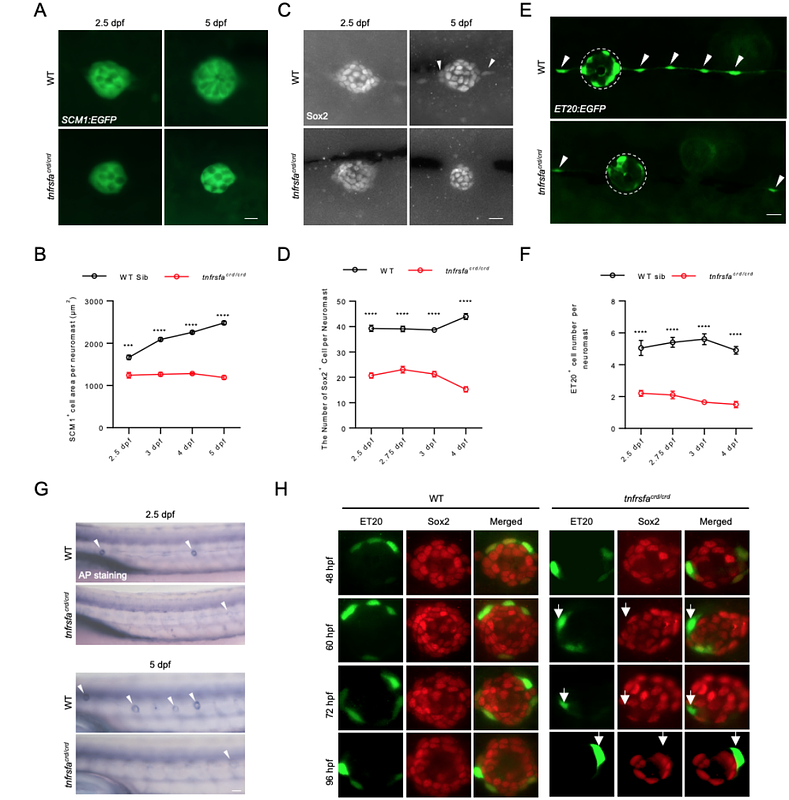Tnfrsf10 Signaling is Required to Maintain the Stem Cell Niche in the Zebrafish Lateral Line

Tnfrsf10 Signaling is Required to Maintain the Stem Cell Niche in the Zebrafish Lateral Line
Fan, C.; Yuan, X.; Wang, J.; Pei, W.; Zheng, H.; Zhang, X.; Burgess, S. M.
AbstractRegenerative capacity varies significantly among species and across different organs. In mammals, the inner ear exhibits a limited ability to regenerate hair cells, whereas the lateral line sensory organ of zebrafish demonstrates apparently limitless capability to spontaneously regenerate hair cells following injury. However, the specific cell populations representing the stem cells in the neuromast and the mechanism of stem cell self-renewal remain unclear. In this study, we show that a mutation in tnfrsfa led to the depletion of neuromast sensory organs and impairment of hair cell regeneration in zebrafish. The decrease of cells peripheral to the neuromasts in tnfrsfa mutants indicates that these peripheral cells, particularly cells called mantle cells, serve as the stem cells within the neuromast. Furthermore, our findings indicate that the ligands Tnfsf10 and Tnfsf10l3 (TRAIL) act through Tnfrsfa activating the NF-{kappa}B signaling pathway in the mantle cells in a non-cell-autonomous manner. NF-{kappa}B signaling is crucial for maintaining the stem cell identity of the mantle cells through activation or maintenance of sox2 expression. These findings demonstrate a critical role for TNF superfamily signaling in stem cell maintenance.